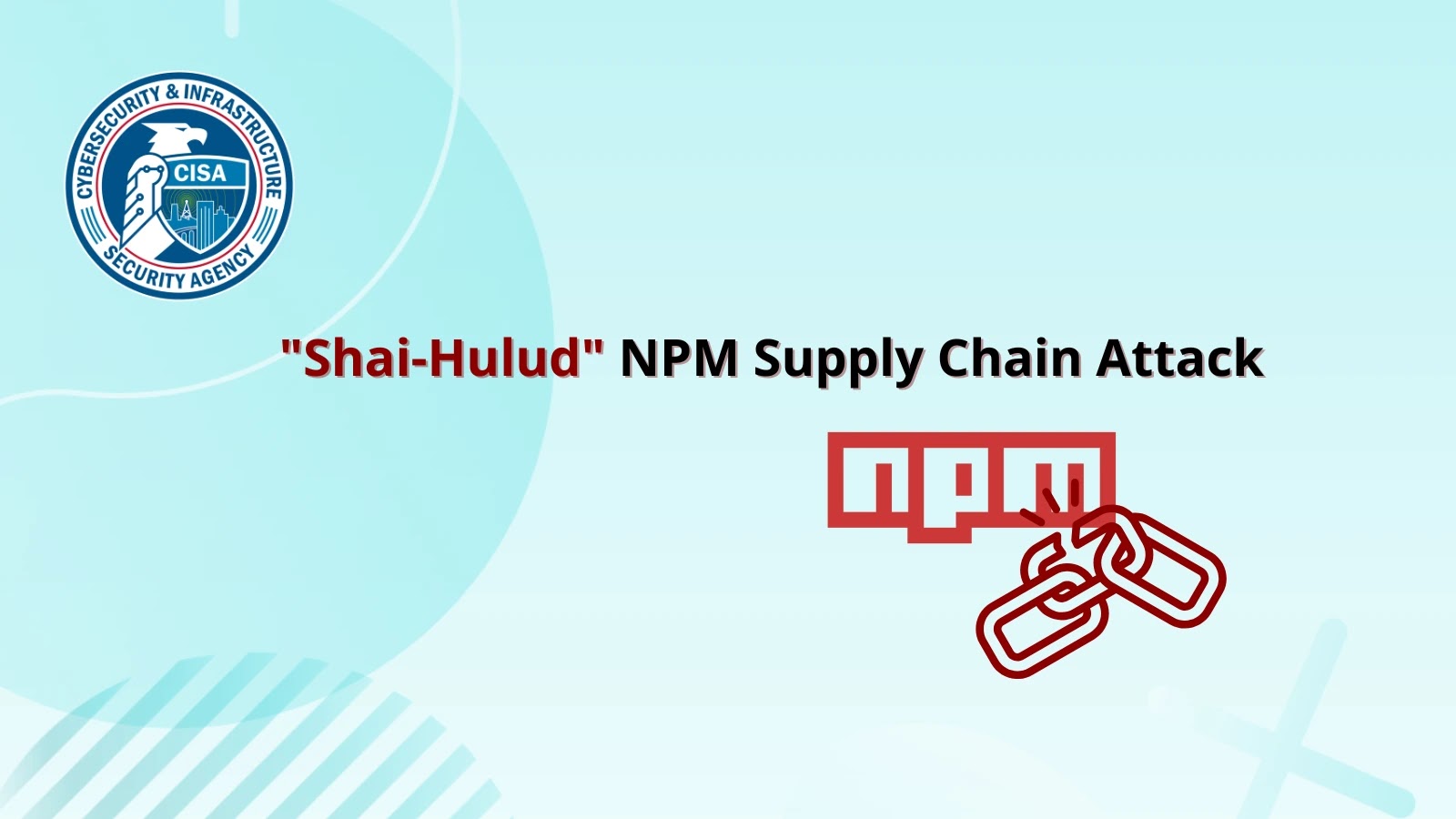
CISA Warns of Shai-Hulud Self-Replicating Worm Compromised 500+ Packages in npm Registry
Urgent Cybersecurity Alert: CISA Warns of Shai-Hulud Self-Replicating Worm Infecting npm Packages
The software supply chain has just taken another significant hit. CISA has issued a critical security alert regarding a sophisticated, self-replicating worm, dubbed Shai-Hulud, which has infiltrated more than 500 packages within the npm registry. This widespread compromise on npmjs.com, the world’s largest JavaScript package registry, poses a severe threat to developers and organizations relying on these packages. Understanding the mechanics of Shai-Hulud and implementing immediate defensive measures is paramount.
Understanding the Shai-Hulud npm Attack
The Shai-Hulud worm is not merely a static piece of malware; it’s a rapidly propagating threat designed to exploit the very fabric of the npm ecosystem. Its modus operandi involves injecting malicious code into legitimate npm packages. Once entrenched, it leverages developer credentials and npm publish workflows to aggressively spread itself further across the registry. This self-replicating nature makes Shai-Hulud particularly dangerous, allowing it to multiply its reach and impact with alarming speed, potentially compromising hundreds or even thousands more packages.
The attack vector focuses on abusing the trust model inherent in software development. By compromising developer accounts or their development environments, the worm gains unauthorized publishing rights. This enables it to inject its malicious payload into new versions of existing packages or even entirely new packages, subtly weaving itself into the dependencies that countless applications rely upon.
Impact on the Software Supply Chain
A compromise of this magnitude within the npm registry has far-reaching implications. Any application or project that depends on one of the 500+ affected packages could be at risk. This creates a cascading effect: a compromised package could introduce vulnerabilities, backdoors, or data exfiltration capabilities into downstream projects without developers even realizing it. The sheer scale of npm’s usage means that the Shai-Hulud worm could potentially affect a vast swathe of the internet’s infrastructure and applications, from web frontends to complex backend systems.
Organizations must grapple with the challenge of identifying whether they are using any compromised packages. The malicious code could range from subtle data collection to more overt actions like command and control communication or even ransomware capabilities, making detection difficult without specialized tools and vigilance.
Remediation Actions and Proactive Defense
Immediate action is crucial to mitigate the risks associated with the Shai-Hulud worm. Developers and security teams must prioritize these steps:
- Isolate and Audit: Immediately isolate development and production environments that might have pulled affected npm packages. Conduct a thorough audit of all dependencies to identify any compromised versions.
- Credential Review: Force a mandatory review and reset of all npm developer credentials, including API tokens and any associated CI/CD pipeline credentials. Implement strong, unique passwords and multi-factor authentication (MFA) across all developer accounts.
- Dependency Scanning: Implement continuous dependency scanning tools in your CI/CD pipelines. These tools can identify known vulnerable package versions and flag suspicious changes or newly introduced malicious dependencies.
- Software Composition Analysis (SCA): Utilize SCA tools to gain deep visibility into your software’s open-source components. These tools can help identify if your projects are directly or indirectly consuming any of the compromised packages.
- Restrict npm Publish Permissions: Review and tighten permissions for publishing to npm. Implement a least-privilege model, ensuring only authorized and authenticated users or automated processes can publish packages.
- Monitor npm Activity: Actively monitor npm audit logs and any associated developer account activity for unusual patterns. Deviations from normal publishing routines or login attempts could indicate a compromise.
- Developer Education: Educate developers on secure coding practices, the risks of supply chain attacks, and how to identify suspicious package behavior or requests.
- Stay Informed: Regularly check official CISA alerts, npm security advisories, and cybersecurity news sources for updates on the Shai-Hulud worm and other emerging threats.
Tools for Detection and Mitigation
Leveraging appropriate security tools is essential in combating sophisticated supply chain attacks like Shai-Hulud.
| Tool Name | Purpose | Link |
|---|---|---|
| npm audit | Identifies known vulnerabilities in your project’s dependencies | https://docs.npmjs.com/cli/v10/commands/npm-audit |
| Snyk | Software Composition Analysis (SCA) and developer security platform for finding and fixing vulnerabilities | https://snyk.io/ |
| OWASP Dependency-Check | Identifies project dependencies and checks for known, publicly disclosed vulnerabilities | https://owasp.org/www-project-dependency-check/ |
| WhiteSource (Mend) | Automated open-source security and license compliance management | https://www.mend.io/ |
| GitHub Dependabot | Automatically checks for vulnerable dependencies and creates pull requests to update them | https://docs.github.com/en/code-security/dependabot/dependabot-updates/about-dependabot-security-updates |
Looking Ahead: Fortifying the Software Supply Chain
The Shai-Hulud incident underscores the critical need for robust security practices throughout the entire software development lifecycle. Organizations can no longer afford to treat open-source dependencies as implicitly trustworthy. A layered security approach, combining proactive scanning, strict access controls, continuous monitoring, and developer education, is essential. This incident is a stark reminder that the security of your applications is intrinsically linked to the security of every single component you use, regardless of its origin. Remaining vigilant and adapting to evolving threats like self-replicating worms will be key to protecting digital assets in the future.





